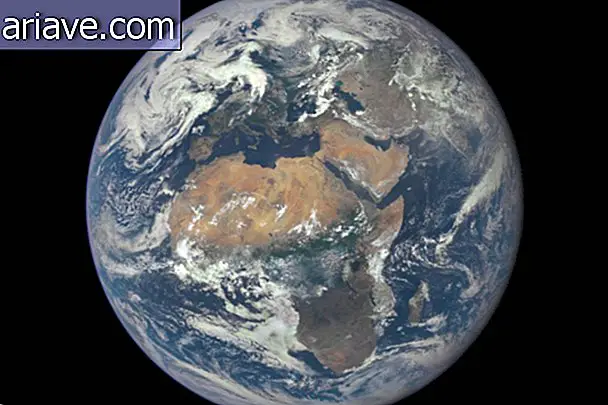Discover 7 of the largest impact craters on Earth
1 - Morokweng Crater
Located under the Kalahari Desert in Southern Africa, the Morokweng Crater was created by the collision of an asteroid between 5 and 10 kilometers in diameter 145 million years ago. The structure was discovered thanks to remote sensing surveys conducted in the region that revealed that the formation is approximately 70 kilometers in diameter.

Incidentally, in 2006, while geologists conducted drilling at the site to confirm that it was indeed an impact crater, they discovered fragments of the asteroid that produced "buried" Morokweng about 770 meters from the surface.
2 - Acraman Crater
The Acraman Crater, located in southern Australia, is estimated to form about 590 million years after the collision of a huge asteroid and originally the average structure between 85 and 90 kilometers in diameter.

Fragments and fossils resulting from the impact were discovered about 300 kilometers from the crater, and scientists believe that when it was produced, the collision released an amount of energy equivalent to detonation of 10 6 Mt.
3 - Manicouagan Crater
The Manicouagan Crater, located in Quebec, Canada, was produced by a meteorite about 5 kilometers in diameter that hit our planet about 215 million years ago and is the largest "visible" impact crater on Earth.

Nowadays, this structure is made up of two rings, one external, 100 kilometers in diameter and the other, internal, 70 kilometers - and the crater houses Lake Manicouagan and a circular island known as René-Levasseur.
4 - Popigai Crater
Located in Russia, the Popigai crater formed about 35 million years ago after a space rock estimated to be 5 to 8 kilometers in diameter collided with the planet's surface.

Interestingly, the space rock fell over a carbon-rich region, and the incredible heat and pressure from the impact resulted in the formation of huge diamond reserves - according to the Russian government. Today, the crater measures about 100 kilometers in diameter - so if that's right, imagine what we wouldn't get out of there if we could dig in those stops ...
5 - Chicxulub Crater
Despite being one of the best known craters in the world, Chicxulub - whose pronunciation is (more or less) tchicussulub - is not the oldest or largest on earth. The formation is on Mexico's Yucatan Peninsula and is believed to have been created by the collision of an asteroid about 10 kilometers in diameter.

Originally, Chicxulub was 240 kilometers in diameter, and the event that caused its formation is also associated with the Cretaceous mass extinction 65 million years ago, during which the dinosaurs also disappeared. Today, the Chicxulub crater measures approximately 150 km in diameter.
6 - Sudbury Crater
The Sudbury Crater, located in Ontario, Canada, was formed just under 2 billion years ago and was originally about 260 kilometers in diameter - meaning it is only slightly smaller and younger than the crater. Vredefort, which we will describe to you in the next item.

Geologists estimate that the crater formed due to the impact of an asteroid between 10 and 15 kilometers in diameter, and the crash even sent rock fragments to Minnesota, 800 kilometers away! Currently, the crater measures 130 kilometers.
7 - Vredefort Crater
Located in South Africa, the Vredefort crater originally was 300 kilometers in diameter and formed 2 billion years ago - making it the oldest and largest impact crater on the planet.

This huge “scar” is believed to be the result of the collision of a 10-kilometer asteroid, a space rock about the size of Table Mountain, one of South Africa's most iconic geological formations. Today the crater is home to the agricultural locality of Vredefort, which has just under 12, 000 inhabitants and was founded in the late 19th century.
***
Do you know more famous impact craters on Earth? Comment on the Mega Curious Forum











